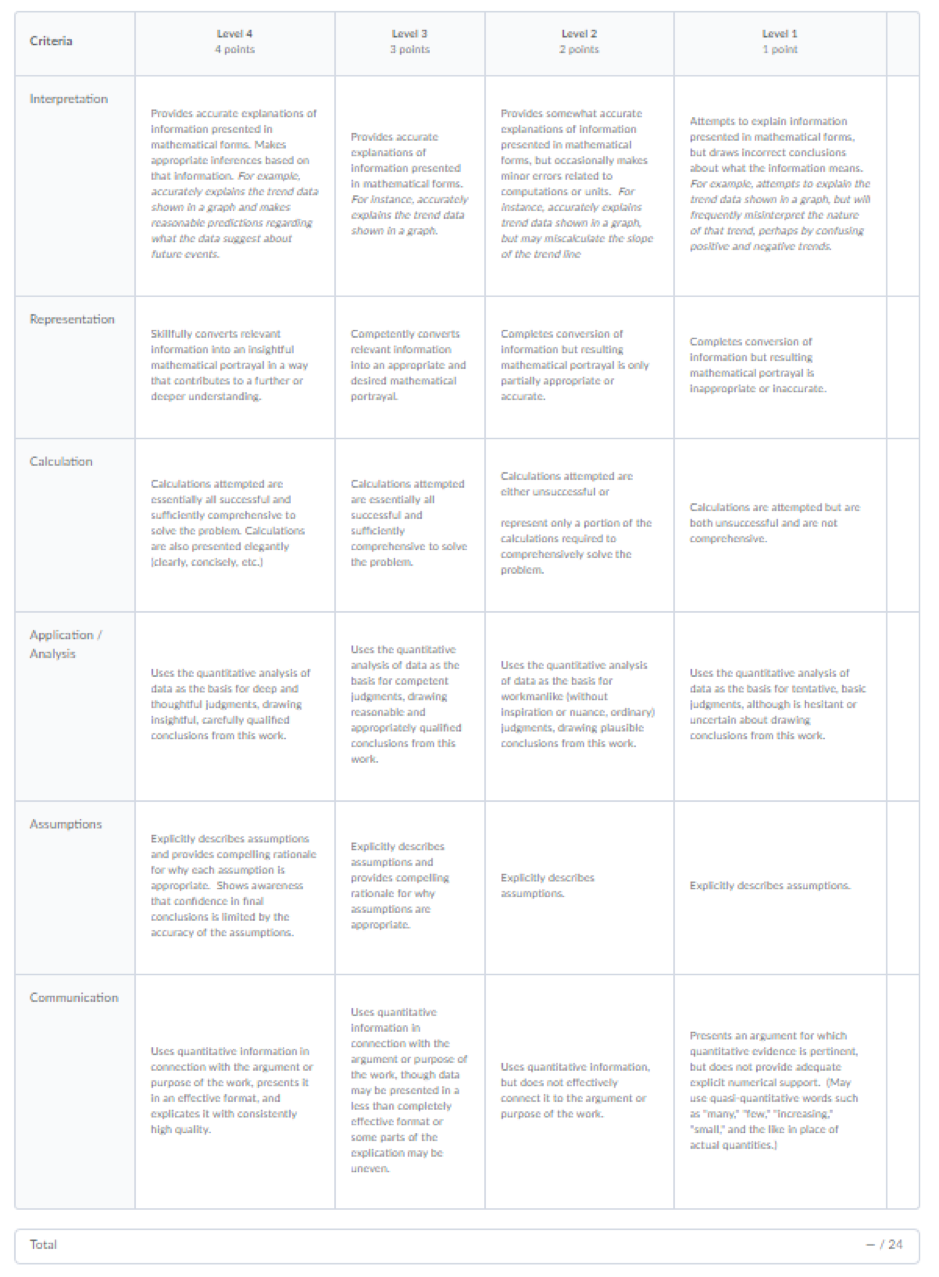Rubrics: Basics
Rubrics are valuable tools in the teaching, learning, and assessment cycle as they can be used for assessment and feedback, as well as instructional purposes. For instructors, they are commonly used to assess an activity or assignment based on a defined set of criteria and standards. Establishing criteria and standards can streamline the grading process, ensure assignments are evaluated fairly and consistently, and help provide justification of grades. Used instructionally for students, they clarify and communicate alignment of assignments with learning outcomes, help students identify goals and priorities in assignments, and provide feedback for improvement.
Examples:
- Your department/program has a standard analytic rubric for evaluating students’ performance in online Discussion posts. The rubric assesses performance based on four criteria: Knowledge and Understanding; Critical Thinking; Communication; and Application of Knowledge. Students may achieve one of four levels for each criteria: Beginning; Developing; Accomplished; and Exemplary. The rubric clearly describes the characteristics of each level for each criterion.
- You want to encourage your students to review and comment on each others’ work during a peer review or critique session. You create an informal holistic rubric that allows course participants to evaluate the overall quality of an item using the following achievement levels: This Needs Work; Good Start; Nice Example; and Showcase Worthy.
- You want to help students self-evaluate their work before turning it in, as well as compose a self-reflection memo detailing how certain areas of their work did or did not meet the rubric criteria.
If you are using Competencies to evaluate students, we recommend you set up rubrics before you set up your competencies, learning objectives, and activities since you cannot create an activity without associating it with a rubric, and you cannot assess whether a student has completed a competency or learning objective without assessing the associated activities using the rubric.
Where can you use a rubric?
You can attach a rubric to any of the following course tools or activities:
- Competencies
- Discussion topics
- Assignment submission folders
- ePortfolio
- Grade items
- Quizzes
- Surveys
Types of rubrics
There are two types of rubrics available for use in TCU Online:
Holistic Rubrics
Single criterion rubrics (one-dimensional) used to assess overall performance on an activity or item based on predefined performance levels (standards). Holistic rubrics in TCU Online may use a percentages or text only scoring method.

Analytic Rubrics
Two-dimensional rubrics with performance levels (standards) as columns and assessment criteria as rows. Allows you to assess participants’ performance based on multiple criteria using a single rubric. Adding criteria groups allows you to group criteria into categories. Analytic rubrics in TCU Online may use a points, custom points, or text only scoring method. Points and custom points analytic rubrics incorporate text descriptions and points to assess performance. With custom points, each criterion may be worth a different number of points, allowing you to weight criteria differently and include an overall score by totaling the criteria. For both points and custom points a total score is provided based on the total number of points achieved.
